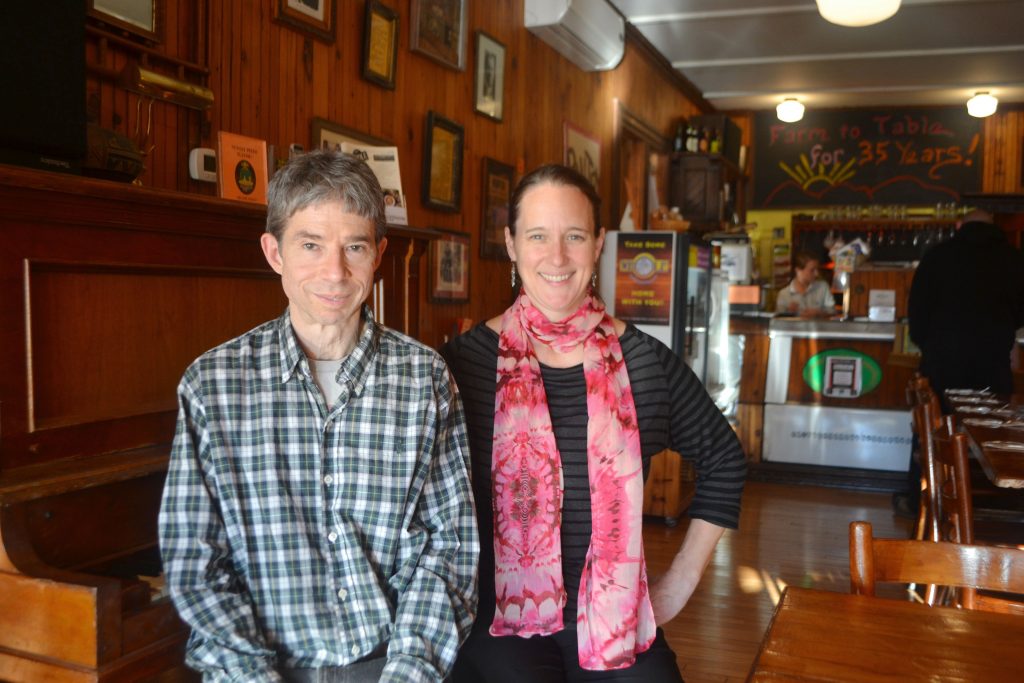
Eliot Fiks, 78’, has made food for Bob Dylan, but cooking for such a well-known musician doesn’t stress him out.
In fact, his restaurant, Whole in the Wall, has served many famous people over the years, including Stevie Wonder, Tom Petty and Cyndi Lauper.
“It doesn’t feel like any pressure at all,” Fiks said. “I guess I feel like what I know, I know.”
One could say that this confidence comes from a place of experience, which makes sense. Fiks has been running his restaurant on the South Side for 35 years now.
Fiks, originally from Staten Island, opened Whole in the Wall in 1980 at the age of 22, but he said that his interest in natural foods dates back to his days in high school. During his time at Binghamton University, Fiks created his own major, social change. He was involved in a newspaper called “Looking Left,” which got him interested in cooperatives and collectives, including the Food Co-op on campus, for which he would make bagels in his apartment to sell.
After graduating and realizing that the 9-to-5 work life was not for him, Fiks opened the business with his friend, who left after a year — Fiks jokingly describes him as “the smart one.”
Yet Fiks must have been on to something, because more that three decades later, Whole in the Wall still prides itself on serving natural foods at its 43 S. Washington St. location.
“I like to say that we were buying local … before the word local was spelled with a capital L,” said Fiks. “We started out buying eggs from a farmer up the road, and local honey … before it became this whole, trendy kind of thing.”
This belief in using nearby resources is something that shows up in more than just what they cook. Whole in the Wall is located in the ground floor of a building that dates back to the 1800s. When Fiks went to renovate it, he didn’t need to go far to find what he needed.
“We went around to a lot of local mansions that were being demolished, and we would do this kind of Guerilla operation, go in the night before and take out all the nice molding,” Fiks said. “Every single piece of wood in here is either the original wood, or recycled wood from various Binghamton mansions.”
During various points in history, the building housed a speakeasy, a delicatessen and a repair store for cash registers. In fact, one of the salvaged cash registers is still in use there today.
But despite the many journeys that the building has taken, the past 35 years have been reserved for serving food that was good for you, and just good in general. For junior partner Stacey Gould, 91’ this was important.
“I liked the uniqueness of it, the food, not only was it a lot more health conscience, a lot more conscientious about ingredients we purvey and all that, it was delicious,” Gould said.
She also says she appreciated the eclectic nature of the place.
“Whatever your thing was,” Gould said. “You could sort of leave your mark and kind of be creative.”
Gould moved to Binghamton to attend school after transferring from SUNY Oneonta, and began working as a waitress. After graduating in 1991, she began working full time.
Besides just serving the local community, Whole in the Wall has a nationwide presence. Across 19 states in 125 stores, as well as online, at farmers markets, and even at the local Wegmans, you can find some of its 8 varieties of pesto.
Every other Sunday is Pesto Day, when the restaurant crew gets together to make 2,000 containers of their homemade spread, and package it in the main dining area.
“All the little elves come out,” Fiks said. “It’s all the same staff that runs in the restaurant and makes it.”
In this business, Whole in the Wall uphold its same values of serving natural and authentic products.
“That’s kind of unheard of, that we actually make a product in our restaurant kitchen that’s distributed nationally,” Fiks said. “It’s not made by someone else in some factory.”


